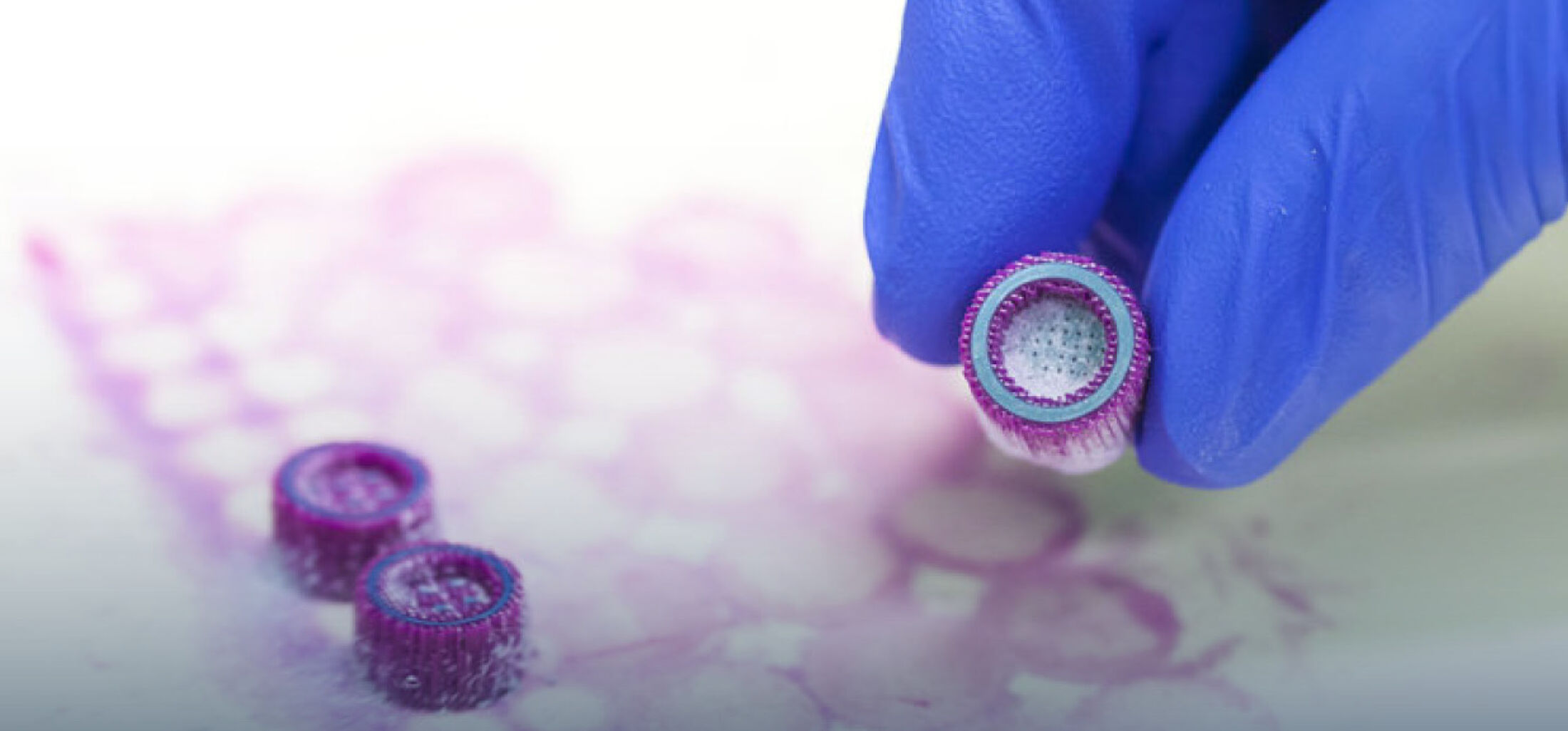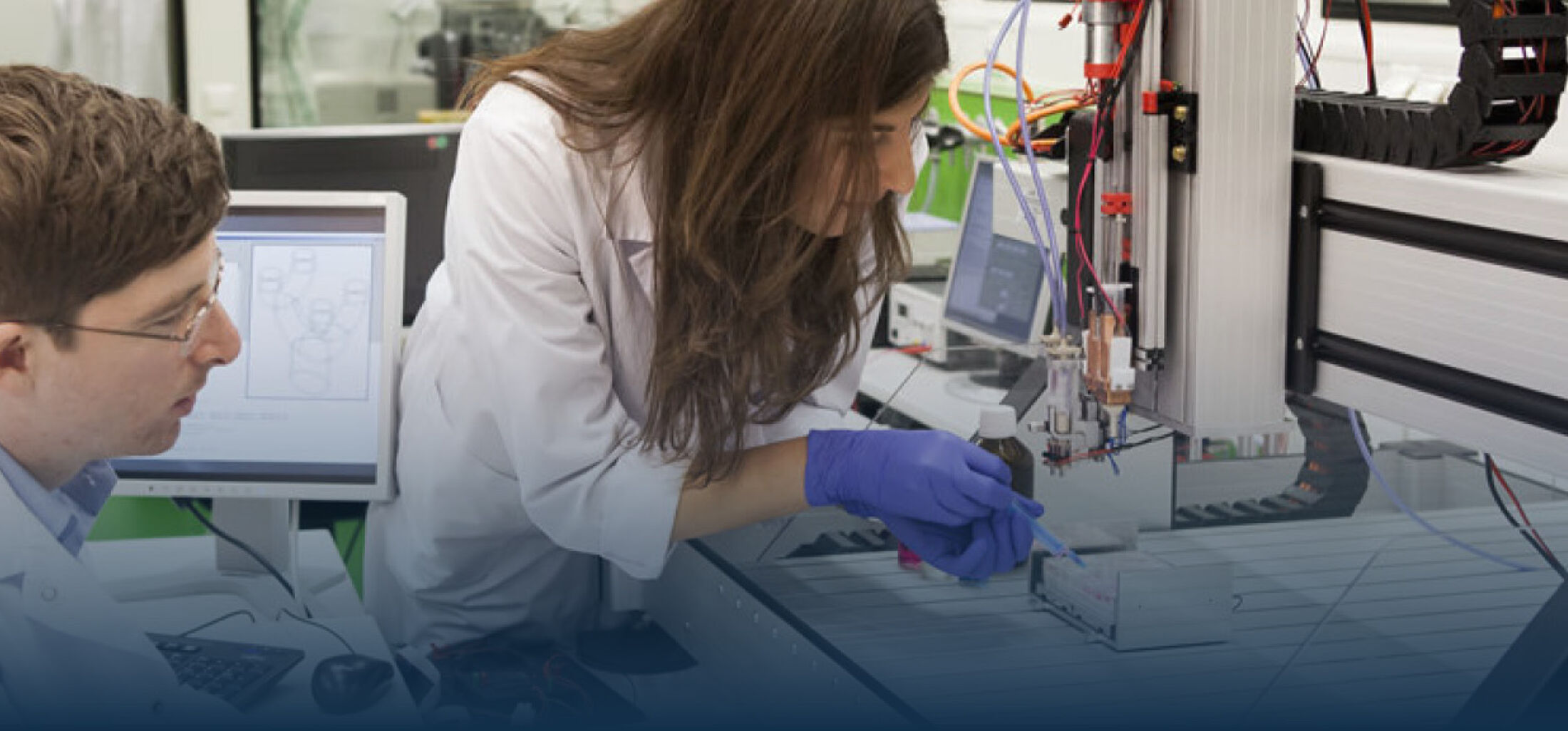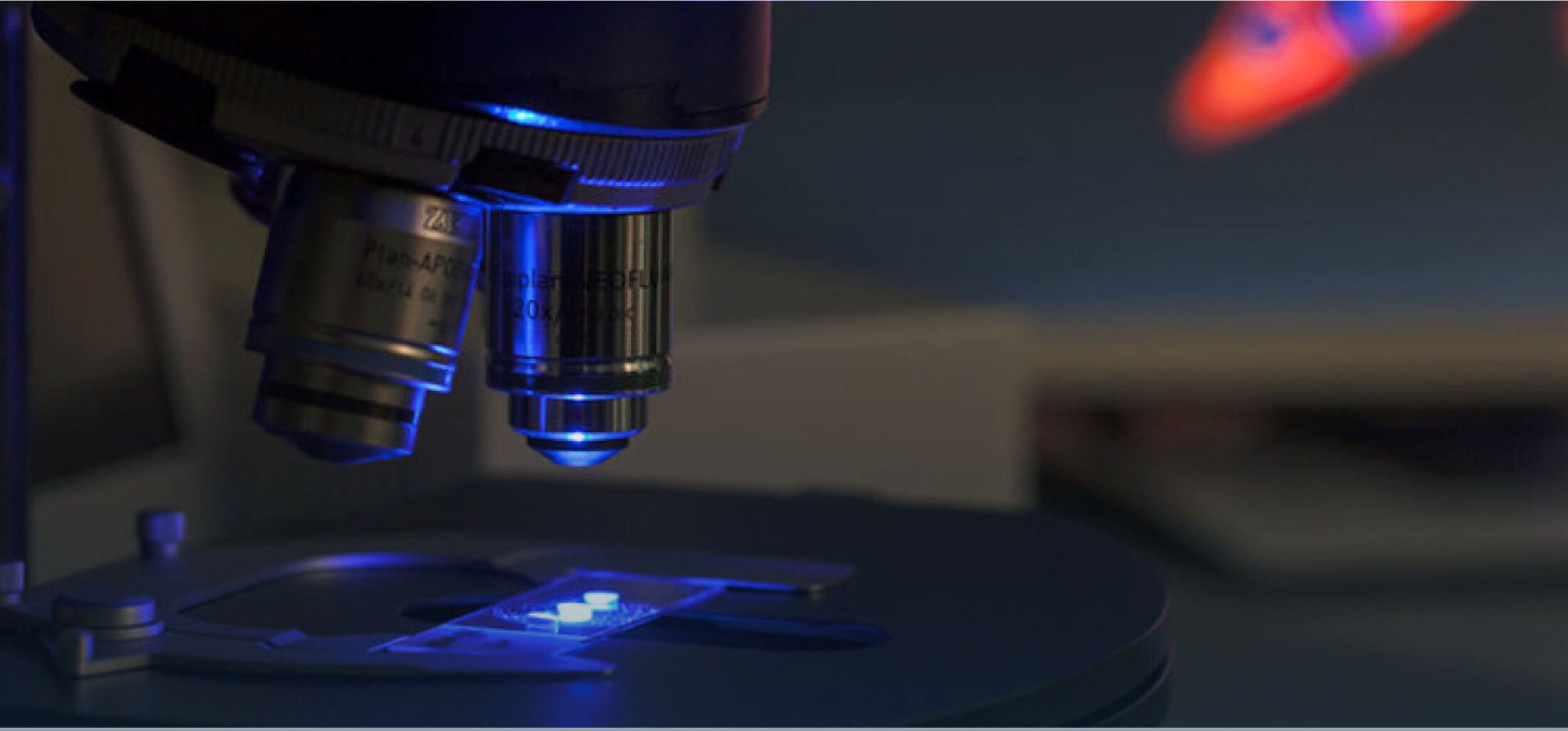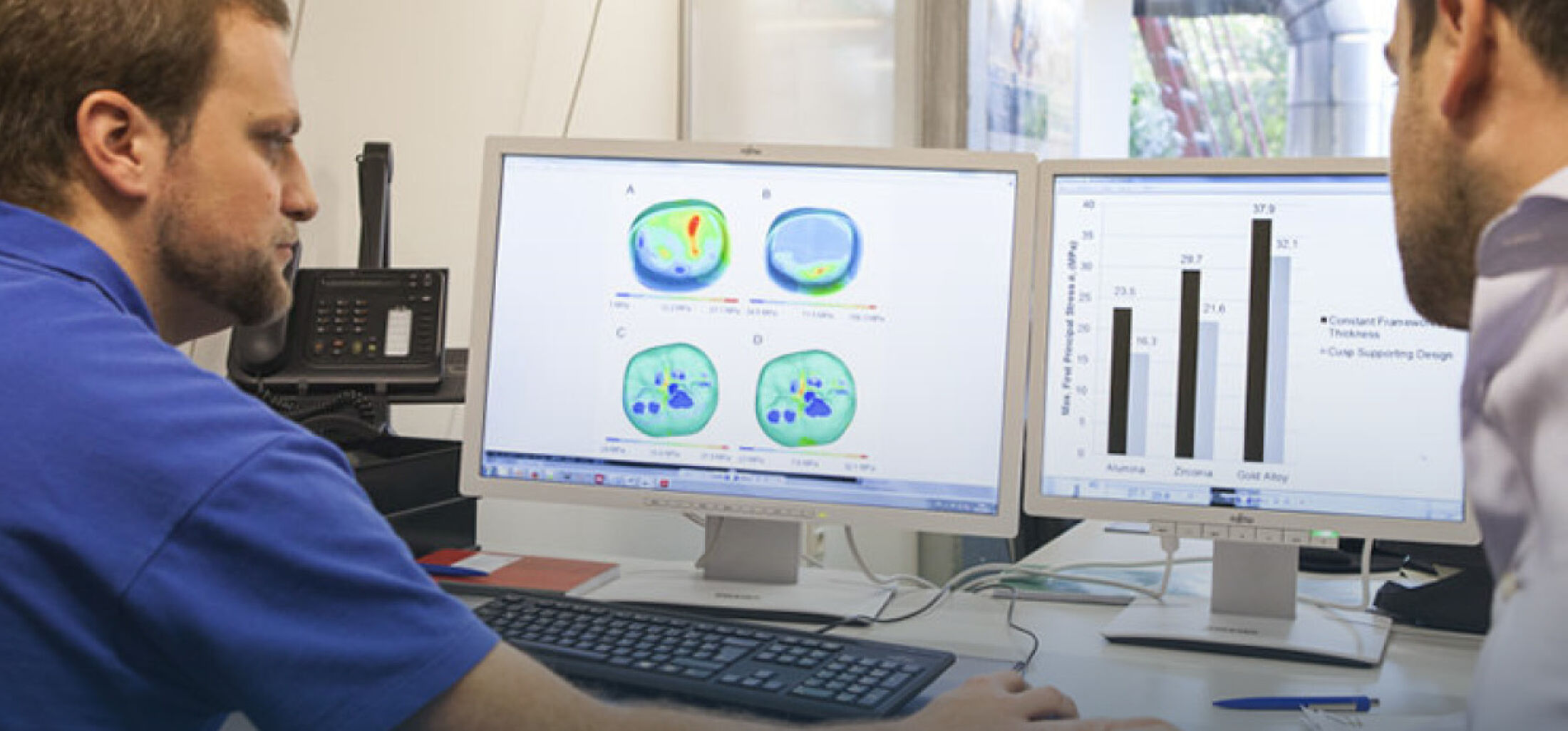NanoTune
Influence of nanopatterend titanium surfaces on the osteogenic differentiation of human mesenchymal stem cells in combination with chemical and biological surface modifications
The influence of anisotropic, ordered surface topographies at the low nanometer level on the behavior of human mesenchymal stem cells (hMSC) is thus far insufficiently investigated and poorly understood. Yet topographies with vertical dimensions in the sub-10 nm range and lateral dimensions in the order of few 10 nm exhibit potential to influence cellular attachment and osteogenic commitment, especially in combination with tailored chemical and biochemical surface modifications.
Within the project NanoTune, financed by the German Research Foundation (DFG), the investigative focus will be placed on whether and how nanostructures on titanium substrates can significantly influence protein adsorption as well as hMSC adhesion, migration, and osteogenic differentiation, both by themselves and amplified with chemical and biological surface modifications. As such, ion bombardment is used to generate ordered wave-like ripple patterns with lateral periodicities of few ten nanometers and corresponding heights. Silanization provides tailored surface chemistry, where crosslinking will be used to specifically couple different proteins to promote hMSC adhesion, migration, and differentiation. The topographical, chemical, and biochemical parameters are systematically investigated to reveal influences of the individual surfaces on the hMSC. The response of stem cells on structures on the small nanometer scale learned from this project will help understand the mechanisms of osseointegration of metal implants.





